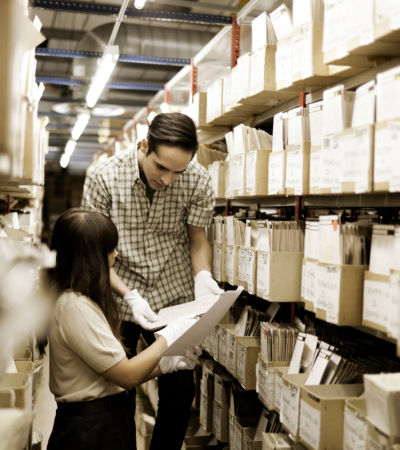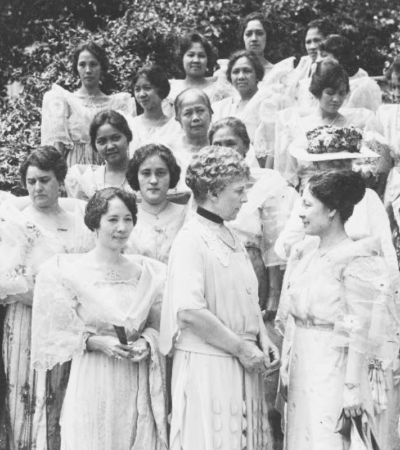Teens
Young Adult
Adults
Scrapbooking: No Documents, No History
This teen or adult program uses Library of Congress women’s suffrage primary sources, such as letters, diaries, women’s self-published information sources and other ephemera, to examine how suffragists documented their activism and feelings on women’s rights and social issues of the time.
Program attendees use current magazines, newspapers, flyers, ephemera and personal effects to start their own scrapbook and create their own DIY personal history (that might become a future primary source!).
Advanced Planning
Library staff can reach out to local university archivists or special collections librarians to request information on how archival organizations assess which personal items they acquire for their collections. The program can also be expanded by introducing copyright-free and free-to-reuse images from the Library of Congress digital collections and image bank websites like Pexels or Wikimedia Commons.
Recommended primary sources to share with program attendees:
- Plans of the Suffragists. Sept. 1902. Manuscript/Mixed Material. The Library of Congress.
- Report of the Woman’s Rights Convention, held at Seneca Falls, New York, July 19th and 20th, Proceedings and Declaration of Sentiments. John Dick at the North Star Office, Rochester, New York, 19–20 July 1848. The Library of Congress.
- Men’s League for Woman Suffrage, Miller Scrapbook. 1910–1911. The Library of Congress.
Marketing
You can market this program on your library's social media pages, newsletter and through any outlet your library typically utilizes when promoting programs to patrons.
In your marketing, mention that participants are encouraged to bring any personal items they would like to use to start their scrapbook.
Budgeting
This program can be planned with no budget. You can pre-select discarded library magazines, books and newspapers and collect craft items such as scissors, tape, markers, pens and pencils for the scrapbooking portion of the program.
Day-of-event Activity
This program can be simplified by setting up the scrapbooking materials ahead of the program at one central table or at each table for attendees.
Program outline:
- Facilitator gives a brief overview of the women’s suffrage movement. See “The Complex History of the Women’s Suffrage Movement” from the New York Times and “Woman Suffrage Timeline (1840–1920)” from the National Women’s History Museum for background.
- Facilitator demonstrates a search in the Library of Congress women’s suffrage digital collections.
- Facilitator discusses how documenting and studying personal histories are important for creating a nuanced and accurate version of history.
- Facilitator shares the primary sources Plans of the Suffragists, Report of the Woman’s Rights Convention, held at Seneca Falls, New York, July 19th and 20th and Men’s League for Woman Suffrage, Miller Scrapbook.
- Facilitator discusses the process for donating personal items of historical significance to local archives.
- Attendees work hands-on to create their own scrapbook pages. Facilitator and other library staff assist as needed.
- Attendees are given the opportunity to share their scrapbooks in progress and the story behind their scrapbook pages. Sharing could take place in pairs, where attendees can discuss the choices they made and why; “pair and share” arrangements may be more comfortable for attendees who feel reticent about addressing a larger group.
- Facilitator wraps up and asks attendees to post photos of their creations on social media and tag the library.
Program Execution
The length of this program is typically around three hours.
Upon completion of this program, attendees will be able to:
- Identify and discuss the role that archives, scrapbooks, diaries, letters and other personal effects play in preserving and documenting history
- Discuss the importance of primary sources like scrapbooks, letters, proceedings, diaries and other personal artifacts for documenting the history of women’s activism
- Effectively navigate Library of Congress digital collections
Advice
This program is best executed in person.



